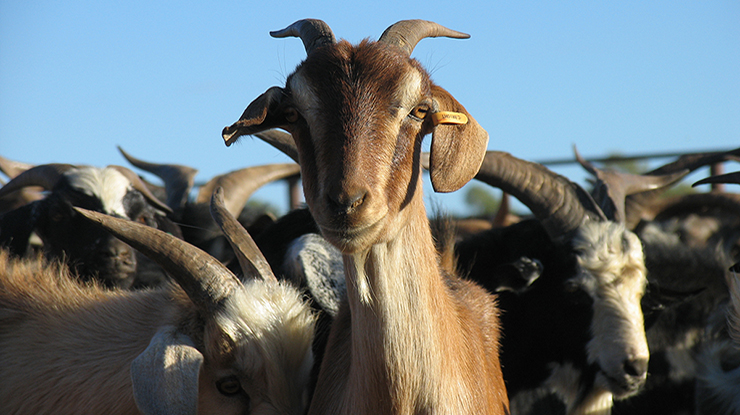
On the banks of technology
For south-west Queensland producers Duncan Banks and Gerry Grant, the transition to electronic identification (eID) brought accuracy, reliability and a chance to rebuild low flock numbers.
Thanks to the help of their fellow producers, the change didn’t have to be a hard one.
Duncan and Gerry wanted to make eID easy in their Dirranbandi Merino and rangeland goat enterprises – so they looked to an MLA Producer Demonstration Site (PDS), managed by Sheepmatters director Anthony Shepherd.
“We think of eID as an animal resumé, storing information we use to make decisions.
“It helps us rank sheep by value, so we only include information with value that can contribute income to the business,” Anthony said.
Maintaining production
Duncan and Gerry were keen to reduce inaccuracies in their flock records.
“We’d heard people using eID had achieved close to 100% accuracy – never losing track of sheep or records,” Duncan said.
“When you're doing it manually, you have to accept a certain amount of error, and so we wanted to reduce that error, even if it’s only 2–3%.”
However, it wasn’t until they were rebuilding after drought that Duncan and Gerry realised how big an impact eID could have on their business, when they had to forgo their targeted breeding just to maintain flock numbers.
“Thanks to the information that was kept in the tags, we identified our top performers from our second-class citizens. The technology helped us get back to performance levels while still maintaining the integrity and numbers of our entire flock.”
Duncan and Gerry used eID-generated targeted data to understand the performance of individual breeders in areas such as:
- fleece weight
- micron
- body weight
- pregnancy rate
- lamb survival.
Duncan found that while his flock would often lose visual tags while grazing on saltbush shrubs, there was a higher eID tag retention rate, which maintained traceability.
Sharing is caring
While Duncan said their transition to eID was smoother thanks to drawing on expert advice, he acknowledges it can be a learning curve and does carry a cost.
“Being a goat producer, I understand the worries people have – the number of tags is a legitimate concern, especially for rangeland goats. But if you can make it work, there’s always ways to make money.”
One solution to ease costs is to share equipment with nearby producers.
Tips for this include:
- choose Bluetooth equipment which doesn’t require installation
- plan separate data collection times
- have backups available.
Looking ahead
Duncan and Gerry are keen to try new technology that will bring better production and profitability to their business. They’ve been testing water monitoring systems, auto-drafters for classing and weighing, and walk-over-weighing.
“I think if you can use good technology to make a bit more profit in your business, you should. With eID, using our data effectively and removing low-performing stock accurately is important so we can keep improving performance,” Duncan said.



